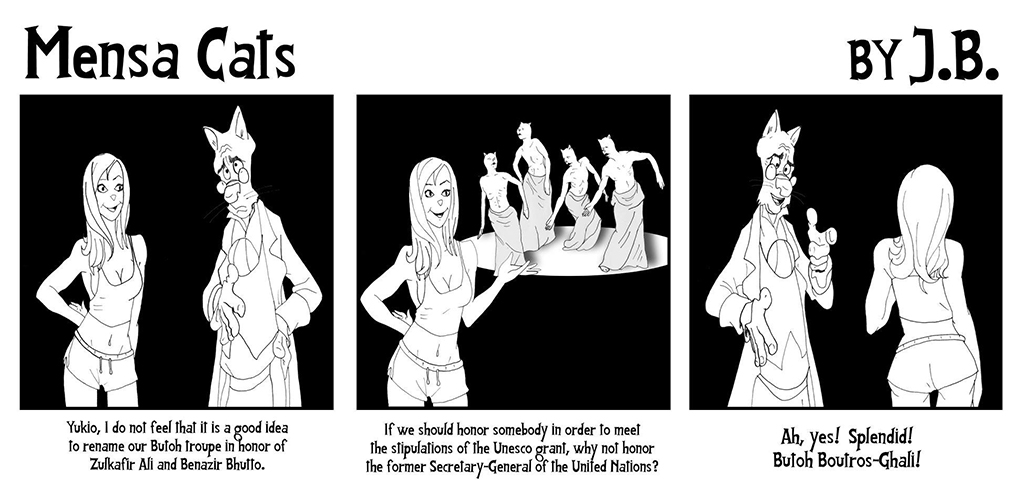A few weeks ago, our friends at Kearny Street Workshop concluded their Auto(SOMA)tic program with a performance bus tour around the South of Market (SOMA) neighborhood of San Francisco. Regular reads of CatSynth will know that SOMA is our own neighborhood in this city – it is a place I have grown quite fond of, and I have watched the rapid changes here with a mixture of openness and apprehension. The tour featured performances at several locations around the neighborhood, all of which were geographically and visually familiar, but contained surprising and diverse cultural histories.
In terms of format and style, the event borrowed heavy from KSW’s SF Thomassons Performance Tour back in 2010 (which I also attended). This included having Philip Huang as our host, joined this time by Allan S. Manalo.

[© Kearny Street Workshop/Mido Lee Productions]
Our first stop was at the intersection of Russ St and Minna St. This otherwise modest intersection in the middle of a larger block was a center of Filipino-American life in the neighborhood, and the street is closed off to form a community park. Here we saw a performance by MeND Dance Theater combining dance with song and spoken word.


There were moments of minimalist form, and others that channeled the thoughts and ambitions of young women who could have easily lived on this block. The performance certainly captured the attention of those of us on the tour.

[© Kearny Street Workshop/Mido Lee Productions]
We then moved on to St. Joseph’s Church on Howard Street, a site that was also on the Thomassons tour in 2010 because it is a maintained but unused building that closed after the 1989 earthquake. This time it was setting for a performance featuring Cynthia Lin and Rachel Lastimosa.

[© Kearny Street Workshop/Mido Lee Productions]
The musical performance featured arrangements of songs vaguely related to activities of the former church such as prayer. But the highlight of the set was a lively gospel tune with the refrain “Come on in” that started straight but quickly because a satirical play on the rising costs of living and working in the neighborhood, and the problem of displacement in the midst of the tech boom. ”If you can pay the rent, then come on in!”

[© Kearny Street Workshop/Mido Lee Productions]
Next we stopped at a large vacant lot at the corner of Harrison St and 8th St, which was once the location of Gordon’s Sugar Works, a large sugar processing plant founded by George Gordon. A nearby alley (coincidentally adjacent to the Stud club on Harrison) bears his name. However, we were here to see a performance by Hālau o Keikiali’i, a performance and cultural group dedicated to preserving and nurturing traditional Hawai’ian culture, particularly hula kahiko (ancient dance).

[© Kearny Street Workshop/Mido Lee Productions]
The performance was energetic but also had a very serious quality to it, with its invocations of gods and respect for the land. Indeed, part of the connection to the tour was a tribute to the land that has been industrialized and redeveloped many times. At the corner itself was a ‘Ōhi’a Lehua tree – I had seen that tree plenty of times and never realized that. The performance ended with an offering at the tree and an invitation to us to do the same on our own “land”.
We then headed east across the breath of SOMA, even passing quite close to CatSynth HQ, before coming to the Embarcadero and a bayside park at the site of the former Pier 36. Here, we were met by Anirvan Chatterjee and Barnali Ghosh of the Berkeley South Asian Radical History Walking Tour.

[© Kearny Street Workshop/Mido Lee Productions]
The introduced us to the history of South Asian immigrants to San Francisco in the early 20th century, focusing in particular on one young man who came to study at UC Berkeley. He encountered racism and xenophobia, but also a community and the chance to encounter progressive ideas that he and others put to use organizing support for eventual Indian independence from the British Empire. Look for a report from the Berkeley South Asian Radical History Walking Tour here in the future once I finally have a chance to attend.
Our final stop was, at least in my own opinion, not in SOMA at all, but south across the Mission Creek in the partially developed Mission Bay neighborhood. Here, in a construction site on the edge of the new UCSF Mission Bay campus and housing developments, we were treated to a series of skits by Granny Cart Gangstas.

[© Kearny Street Workshop/Mido Lee Productions]
This all-women-of-color troupe “pokes fun at pervasive media representations of women, pop culture, and consumerism in our daily lives.” One of the more amusing ones centered on a young woman convinced she was Ariel from the Little Mermaid.

Overall, it was a fun afternoon, and provided some interesting ideas and information as I continue and wander the neighborhood where I live. Thanks to Kearney Street Workshop and co-presentedShaping San Francisco, and to our hosts Philip Huang and Alan S Manalo for a successful event.

































